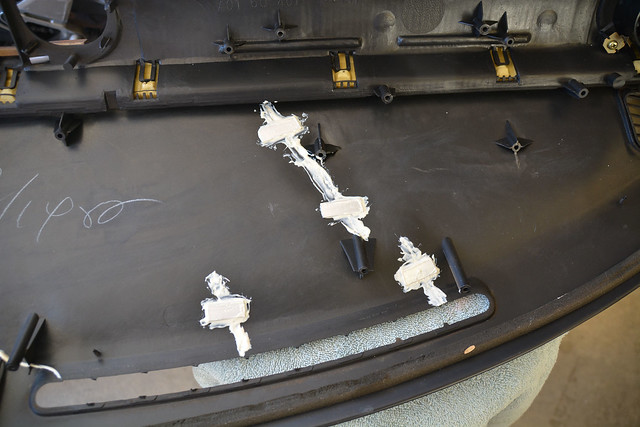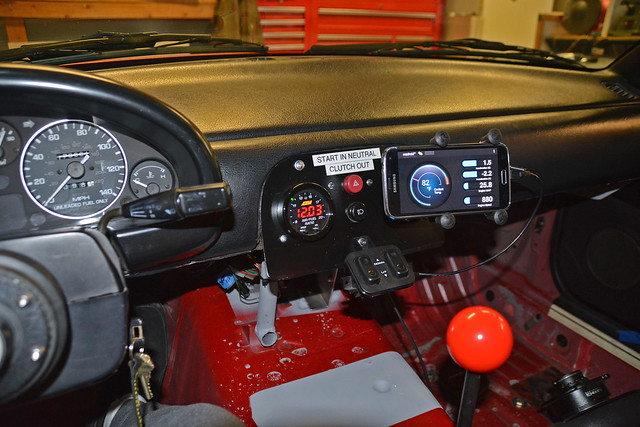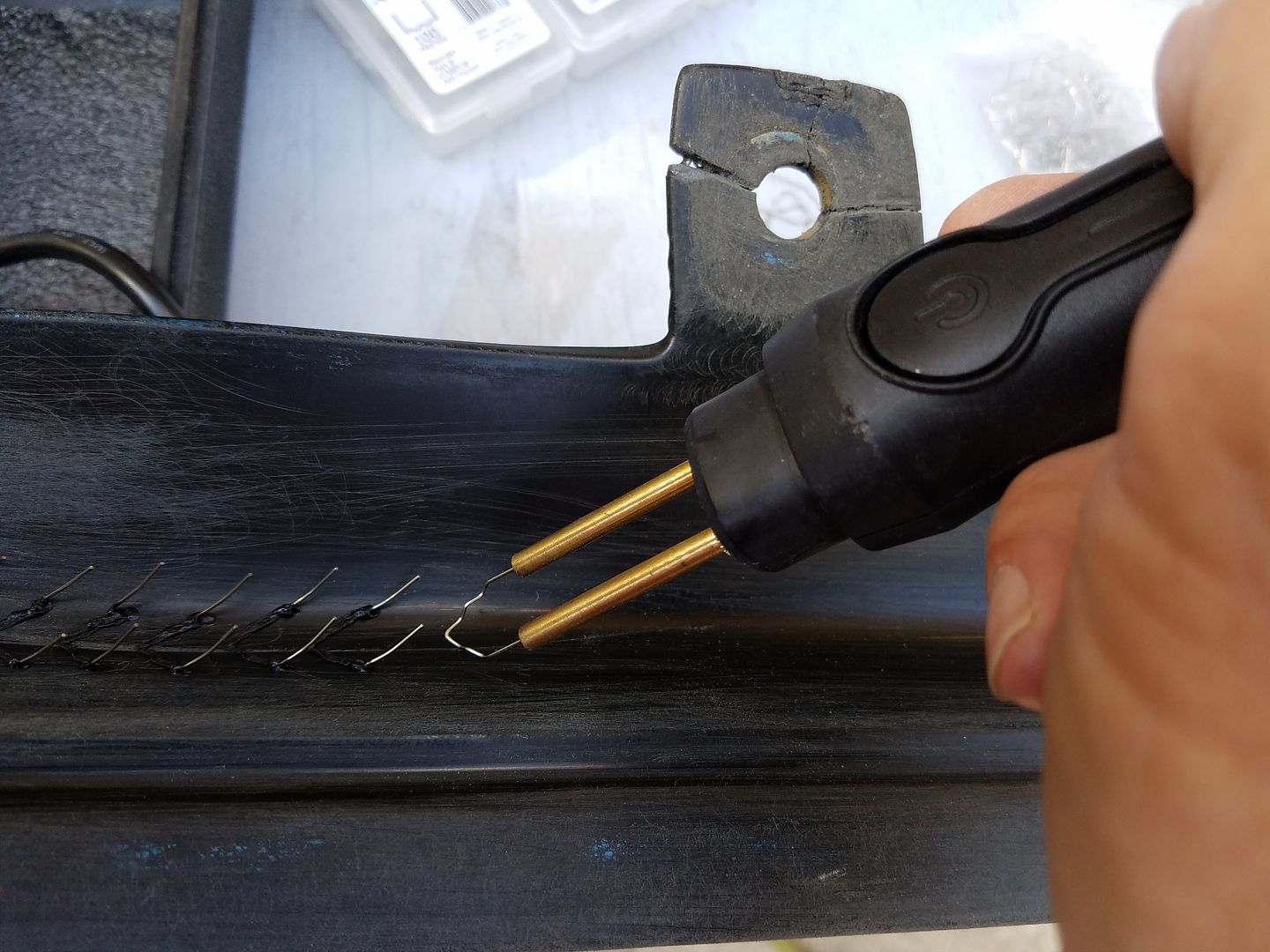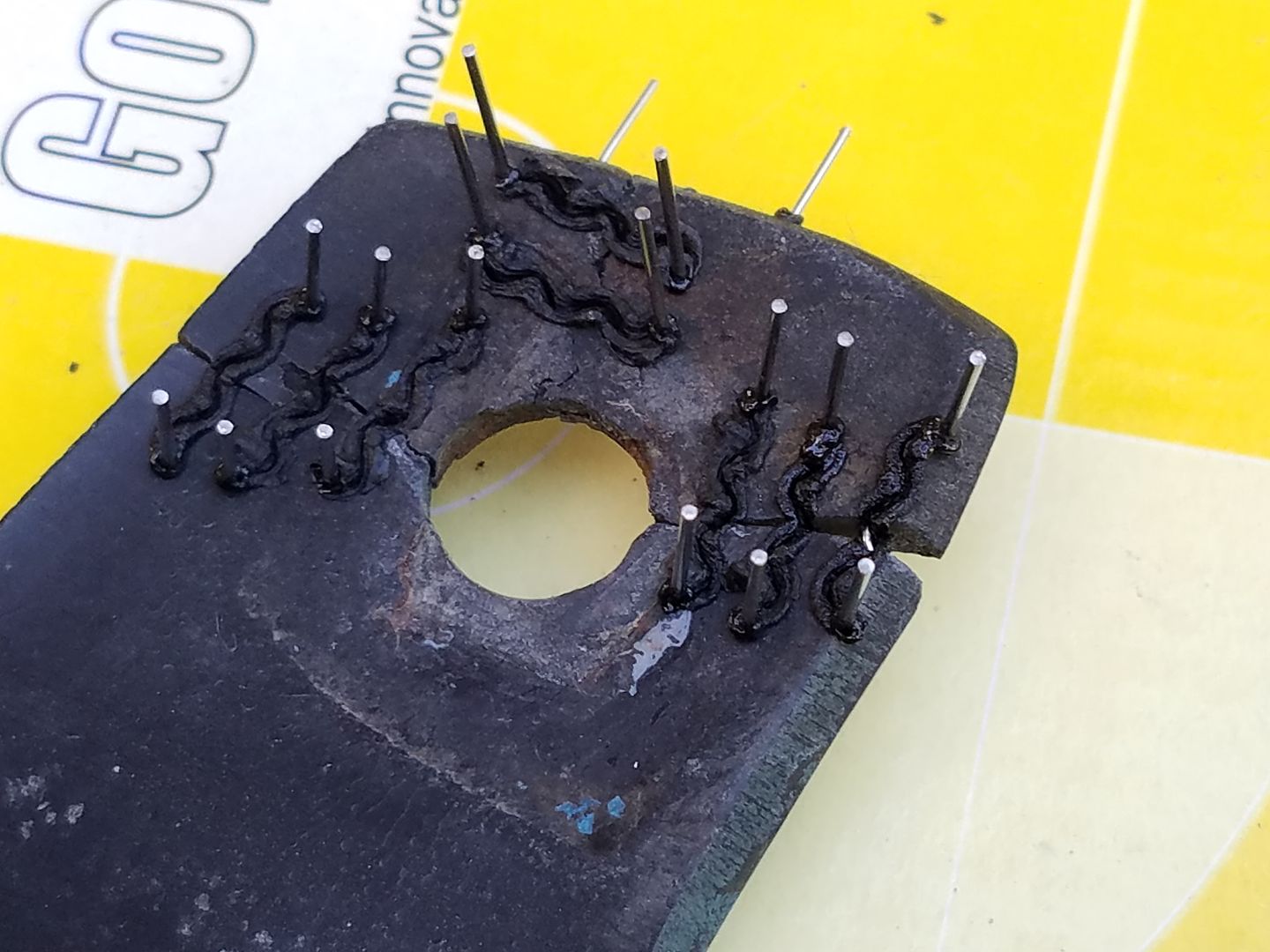The Fiesta has some plasticy parts that are screwed to other plasticy parts that have snapped off. It looks like Ford glued the mounting tabs in place, but the glue didn't hold up to repeated cone bashing. SO, I am looking for a way to glue a plastic thing to the inside of a plastic fender.
I know 3M makes adhesives that bond airplanes together, so I have to believe that this can be done. I am not interested in SuperGlue, it never works for me. I want some 2-part epoxy that is deadly but makes a bond stronger than steel. It will be hidden from view, so appearance is not important, only strength.
So what does the hive use to glue stuff that actually has to hold?
JB Qwik works for me most of the time. It's ugly, but work withable, and the bond is usually stronger than what I'm trying to put together.
If you can scuff up both surfaces for adhesion, Loctite 5 minute epoxy is pretty great for that sort of thing.
JBWeld Plastic Bonder.
I've used it numerous times on low-stress areas and it has never failed me. I'm somewhat ashamed to say I'd use JB weld products in plenty of places lol. All their products have worked for me, and as long as I don't think it's too much of a hack, I'll use it (not like some guys using it to do something extreme like weld a piston lol)

Rodan
HalfDork
2/11/19 9:51 a.m.
I have had very good results with Loctite/Hysol 9462, an aerospace grade, thixotropic (it won't run) two part epoxy.
I've used it for years on all kinds of different stuff, bonding wood, metal and plastic. It's takes 24-48hrs to fully cure, but it works great. With some aluminum backing tabs, it worked great to hold my NA Miata's dash together...


I've always bought it from an RC aircraft supplier (rebranded as "Aeropoxy"), because that's what I first started using it for, but it can be found from industrial suppliers as well. It's not cheap, but it's worth it.
This is where I get it: BVM Jets Aeropoxy

Good suggestions here, some I've used, some I've never heard of. It's obvious that the previous replies provide more useful information than I could when it comes to the newer bonding agents.
I've glued up hundreds, if not thousands of fishing rod handles. The reel seats have to withstand years of torque under extreme conditions.
Whatever you are glueing, the surfaces must be prepped properly.
Scuffing the surfaces to be bonded has already been mentioned. That's a very important step. Depending on what I'm working with, I tend to gouge up the surfaces with a sharp object pretty aggressively.
The other important factor is that the surfaces must be absolutely clean before you apply your glue or epoxy. I like to wipe the surfaces with 99% isopropyl alcohol.
It's cheap, I've never had it melt plastic when used for cleaning a surface, and it's not overly toxic. I used to use acetone, but it's not real friendly around plastic and it's nasty stuff to work with. This also works well for paint prep.
In reply to Floating Doc :
I agree 100%. It's like painting where the prep is most of the work!
I use epoxy, specifically this stuff.
For gluing I use some of the microfiber dust to make it about like peanut butter, but you can use it straight.
Epoxy is my go-to for plastics since some plastics can be really hard to get things to stick to... particularly PVC.. but I would venture that your plastic is ABS. If that's the case, then either epoxy or 3M would have you covered. I just prefer epoxy since its a bit more universal
Cone-bashy plastic car bits are typically TPO (thermoplastic olefin) or PP (polypropylene), neither of which are easy to bond with adhesives due to their chemical resistance. Mechanical fasteners or thermal bonding may be a better alternative for you pinchy. Can you post a pic of what you're working with so we can offer up some additional advice?
Do you have access to horses? Preferably ones that nobody would notice if they went missing.
Any suggestions for chrome-plated plastic? I've got a trim piece that I'd like to repair.
Chrome plated plastics are typically styrene based materials such as PS (polystyrene) or ABS (acrylonitrile butadiene styrene). They bond nicely with solvent based adhesives or epoxy. You need to remove the plating at the bond joint for solvent based adhesives. Not much of concern with epoxies.
3M 5200 has held dirt bike plastics together through years of crashing with no prep at all. It's super forgiving of prep which is a good enough reason to choose it for me. It was originally created to bond boat decks to hulls. It's amazingly resistant to everything except gasoline.
In reply to wawazat :
To build on this, the TPO’s and PP’s are are very difficult to bond. Surface prep and the adhesives are critical. I would look at 3M for a Urethane adhesive specifically for TPO/PP and follow their directions exactly.
About 5 years ago I fixed significant cracks in a bumper cover with the Gorilla Duct Tape. It was intended to be temporary, but my laziness has made it a permanent fix so far. It’s still holding together. The key was using lots of surface area.
You might want to consider a layer of fiberglass (with resin) over the fix to reinforce it. Again, surface area is your friend with adhesives.
For the ABS parts on my CRX, I actually made my own glue. Got some ABS pipe and used a rasp to turn it into powder. Used acetone to melt it, then slathered it on. I used fiberglass mesh (drywall repair mesh) to provide a bit of extra structure where required. Worked a treat.
For epoxies, I avoid JB Quik and use JB Weld instead. It's considerably stronger if you read the specs. I've also had very good luck with PC-7, it doesn't flow/sag as much as JB so it's easier to keep in place on a vertical surface.
In this case, I'd do my best to ID the plastic involved first because that will determine the best adhesive. 3M and Loctite both have good websites that will tell you what you need, although the danger with 3M is that you'll find yourself drawn to some industrial adhesive that only comes in 55 gallon drums and requires a PhD in chemical engineering to use properly.
Rodan said:
I have had very good results with Loctite/Hysol 9462, an aerospace grade, thixotropic (it won't run) two part epoxy.
I've used it for years on all kinds of different stuff, bonding wood, metal and plastic. It's takes 24-48hrs to fully cure, but it works great. With some aluminum backing tabs, it worked great to hold my NA Miata's dash together...


I've always bought it from an RC aircraft supplier (rebranded as "Aeropoxy"), because that's what I first started using it for, but it can be found from industrial suppliers as well. It's not cheap, but it's worth it.
This is where I get it: BVM Jets Aeropoxy
This is very good stuff. Especially when bonding dissimilar materials. I use this to glue 150# sheets of 3/8 glass into aluminum shoes on sliding automatic doors. The weight of the glass hangs on the adhesive. Then we will roll it back and forth on a track for a few million cycles. I've only ever seen one glue joint fail and that was due to poor application.
I too have had good luck with straight old JB Weld. The key is the prep.
The best glue for your application is Lord Fusor 143 with 602EZ primer. It is designed to repair hard to bond bumper plastics.
Don't bother with a epoxy, it is not the right stuff for bumper plastics.
¯\_(ツ)_/¯ said:
If you can scuff up both surfaces for adhesion, Loctite 5 minute epoxy is pretty great for that sort of thing.
This it's all about surface prep if any adhesive is going to have a chance. I build little model planes using glue that see insane g loads and stay together. You need a clean roughed surface or porous surface if you want adhesives to work. Plastic is not very porous, so you need to scuff. Those minor abrasions give the glue a place to actually grab.
I use the 3M two part products for bumper cover repairs combined with hot staples when repairing broken tabs etc.
[URL=http://s240.photobucket.com/user/NOTATA/media/spoilers%20flares%2070%20TA%20repairs%20and%20paint/20161206_130848_zpso0pbqfhl.jpg.html] [/URL]
[/URL]
[URL=http://s240.photobucket.com/user/NOTATA/media/spoilers%20flares%2070%20TA%20repairs%20and%20paint/20161205_170933_zpsb9eishw9.jpg.html] [/URL]
[/URL]
In reply to NOT A TA :
Hot Staples!
How did I not know this was a thing.
Now I want one and I don't even have any broken plastic to repair.

Dave M
Reader
2/13/19 10:00 p.m.
I have very little adhesive expertise but just wanted to second the recommendation for companies that make r/c airplane glue. I like Bob Smith Industries products a lot; they make great stuff and sell it in small quantities.




















 [/URL]
[/URL] [/URL]
[/URL]






















